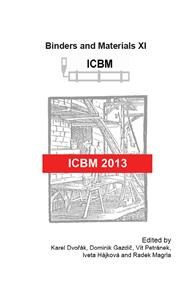p.184
p.188
p.192
p.196
p.200
p.204
p.215
p.220
p.224
Study of Influence of Fly Ash Character on its Behaviour during Clinkering Process
Abstract:
Fly ash is currently secondary raw material, which is produced in huge quantities and its applicability is still not optimal. Even though it is used in cement, concrete, mortars, aerated concrete, ceramics, etc., it is still used, more than 80 % of it, for the reclamation of industrial areas and open cast mines. The production of artificial aggregate by clinkering fly ash utilizes at least 90 % of fly ash in the mixture and it is, together with aerated concrete, one of the ways to make the most of the potential of this raw material. This article deals with the description of the nature of individual fly ash types produced in the Czech Republic and the study of its influence on the behaviour during the thermal process. Chemical composition is the decisive parameter; it indicates the ratio of silicon, iron and aluminium oxides, and thus affects the melting point of the entire complex. This article points out the differences among the various fly ash types and it directly shows, using a picture-analysis, the changes in a sample cross-section during annealing.
Info:
Periodical:
Pages:
200-203
Citation:
Online since:
February 2014
Authors:
Keywords:
Price:
Сopyright:
© 2014 Trans Tech Publications Ltd. All Rights Reserved
Share:
Citation:


